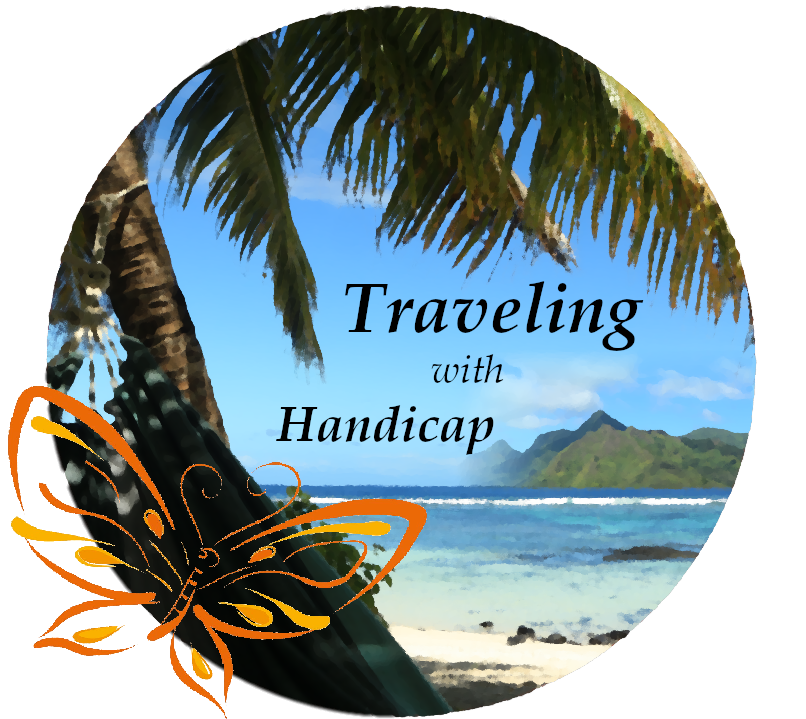We travel not to escape life, but for life not to escape us.
Robyn Yong
Coming from Medellín, I took a night bus towards Cartagena. I have been told several times that it will be super humid. Thus, I dressed accordingly, to be able to quickly change on the bus before arrival. Indeed, the other tourists were correct. I haven’t experienced such a high level of humidity combined with heat within South America. For sure, it was very humid in the Amazon (in Ecuador). Nevertheless, in the Amazon, it was not as hot as on the Caribbean coast of Colombia.
Cartagena
My first stop along the Caribbean coast of Colombia was in Cartagena. A famous colonial city with buildings of the 16th century. Similar to the African slaves being brought to the northeastern edge of Brazil, to El Salvador, Cartagena was a hub for trading slaves from Africa. This historical context is still visible within the Cartagena of today.



Cartagena extends over quite some area. The parts attractive for tourists are the Old Town, Getsemaní and the modern Bocagrande with the modern hotels and beaches. Since the bus terminal is located on the inland-end of the city, I got a good impression of many other parts of Cartagena. Honestly, while the historic center as well as the modern districts along the coast are pleasant, most other parts of Cartagena look very poor. I was happy I didn’t have to get off the bus anywhere in between until my hotel within the old town.


Old Town
The architecture within the Old Town is a mix of colonial style, republican and Italian style buildings. Its main entrance is through the Puerta del Reloj (Clock Gate). Luckily, the whole Old City is walled and has different locations with great views on lush plazas, colonial buildings or the surrounding coast.
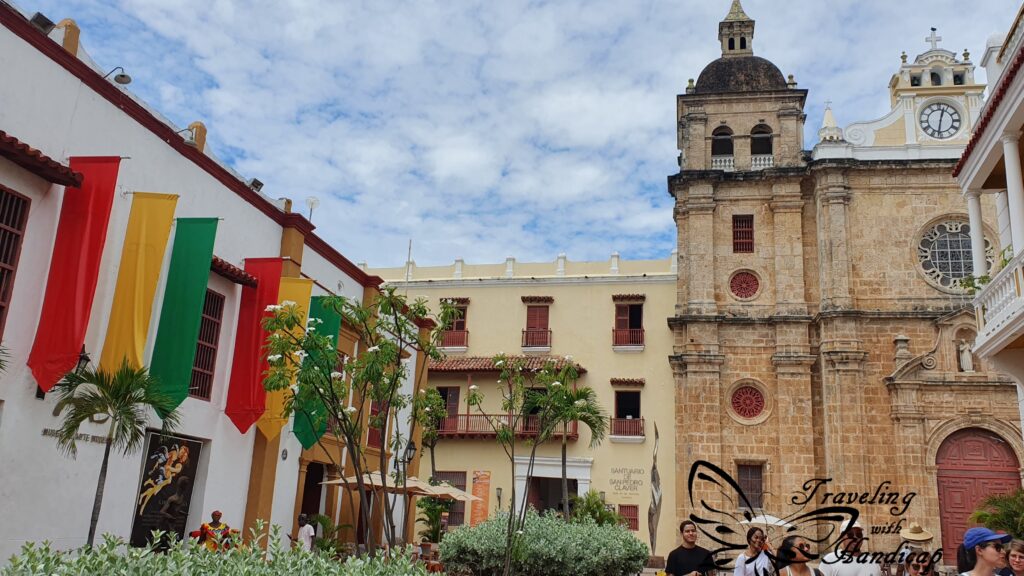


I had a hostel in close walking distance to the main road out of the walled old town, where the bus stop connects to the bus terminal. The hostel had air-condition, which was very important to me. Only during nighttime, though, for energy saving reasons. Just considering how much better you feel with the air-con on and how much energy it consumes, it’s really critical to be careful with respect to climate change.
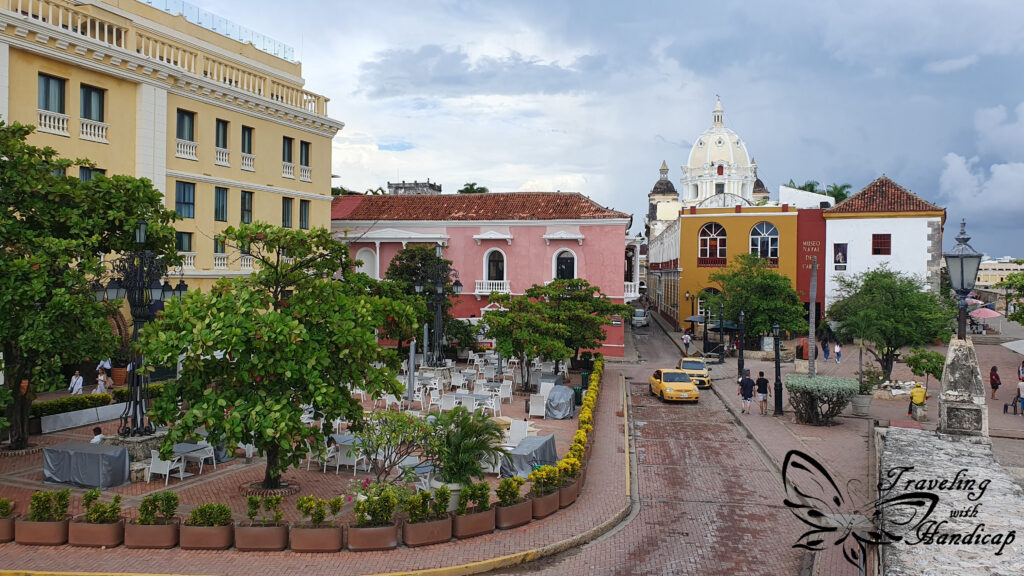





I did a free walking tour in order to see and learn about Cartagena. Our guide told us to not react upon people approaching us and requesting our focus in order to sell us something. The guide didn’t take care of us as a group alone. But instead, similar to the tours I have done in São Paulo, there was a second person with us for protection. We have been told that they hope that no rappers approached us, because those people tend to use force. Nasty people who also the locals try to avoid. Luckily, no weird groups of rappers approached us.




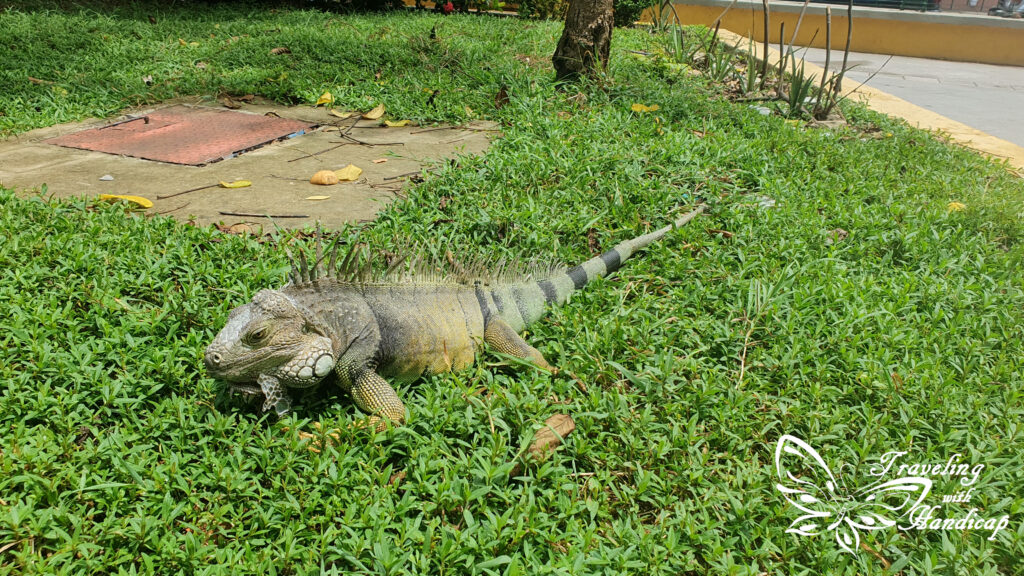

Getsemaní
The district next to the Old Town is Getsemaní, just south of the ancient walled fortress. Once, this district was characterized by crime and drug dealing. However, in our days, this counts as Cartagena’s hippest neighborhoods. It seems to even counts as one of Latin America’s newest hotspots, with old buildings being turned into boutique hotels. We walked through the Getsemaní district with the free walking tour. This way, we spotted many graffities and small roads with some flair. Of course, there were some new and hip hostels as well. However, I was happy I didn’t stay there, since those were too much of party hostels for me and my preferences.






Santa Marta
From Cartagena, I wanted to continue towards the Tayrona National Park. With more time available, I would have stored my backpack in a hostel close to Tayrona and stayed within the park for a few days. I decided to stay in Santa Marta for two night and do a day-trip to Tayrona from there. There have not been any direct bus connections between Cartagena and Santa Marta. Therefore, I had to change the bus in Barranquilla. The bus terminal was located further out of the city. Nevertheless, buses towards Palomino that also stop at Tayrona conveniently leave from the market within the city center.
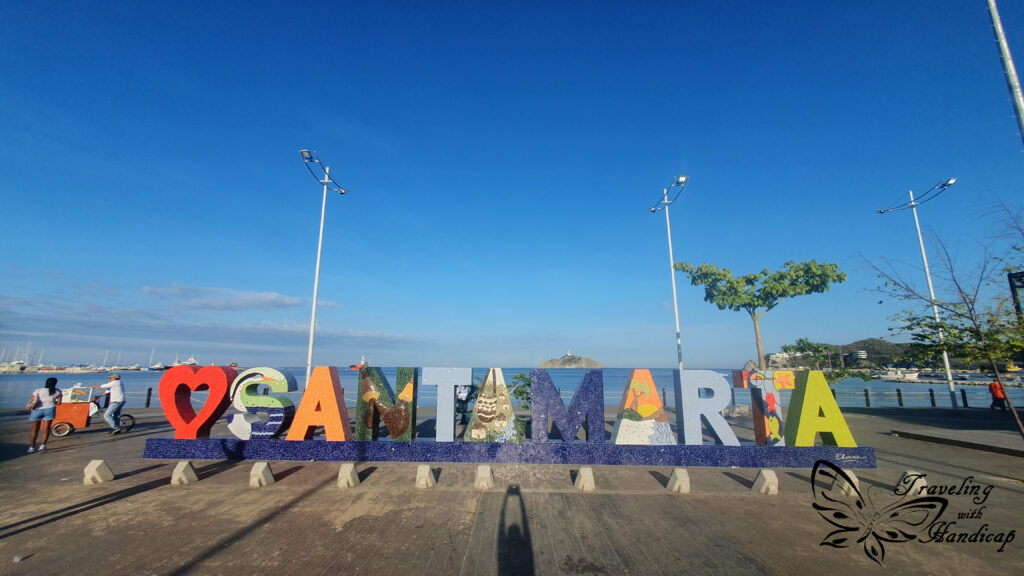


I didn’t see too much of Santa Marta. My impression from the taxi ride was that cultural heritage buildings, modern buildings and crappy buildings are not separated as it was in Cartagena but rather mixed. I stayed in a small hostel close to the coastline, which was nice to stroll around, especially for sunset. The small village Taganga next to Santa Marta connects to the Tayrona National Park by boat. There are also many more hippies on the streets than in Santa Marta.



Tayrona National Park
The Tayrona National Park is really huge and there are still native villages within the park. While there are many rather hidden pathways to enter, the big entrance for tourists is from the eastern end of the park. There, you have to pay quite some money as entrance fee and some fee for “insurance” just in case you need medical support within the park. Fortunately, I got in for free with my disability document. Because to be honest, the park was pleasant, but in relation to the price they charged, I’ve seen better places for a lower price.



From the entrance, there is a longer path you can walk along. It’s a mix of rocks, wooden covers and sand. This path ends at the Playa del Cabo, the most touristy area within the whole park. Along this path I passed different resorts or camping areas, the biggest one at Playa del Cabo. The majority of people start hiking in the very early morning towards del Cabo and walk back by midday to catch the last bus passing on the way towards Santa Marta or Palomino.


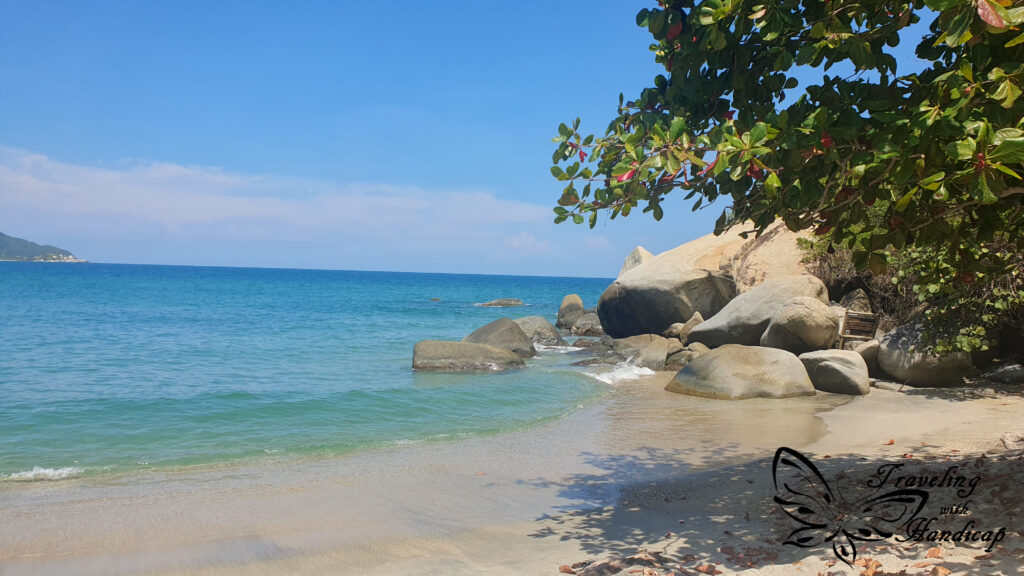


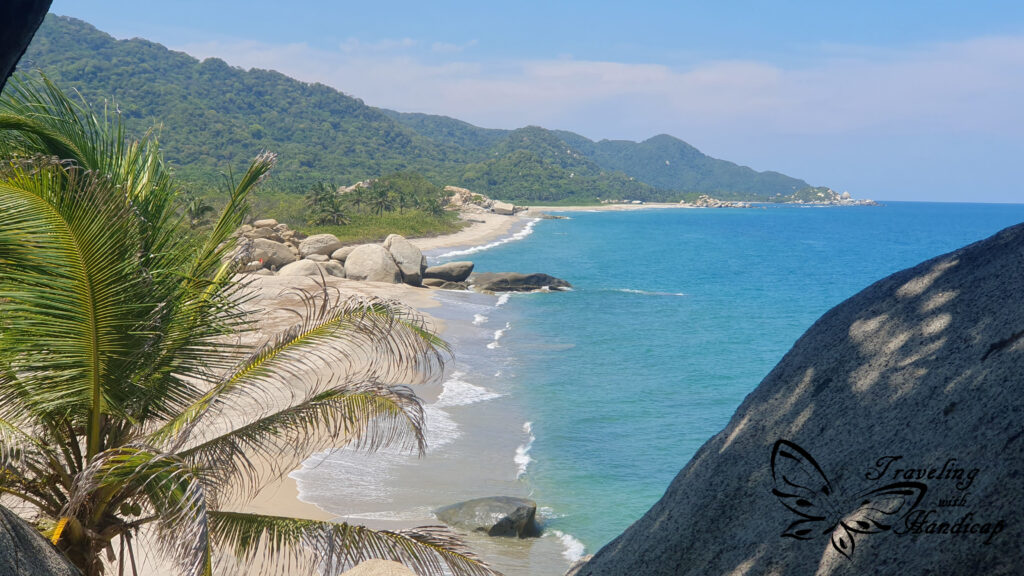
Due to the humidity and heat, I was sweating like hell. Furthermore, it was quite difficult for me to walk on sand. This is why I decided to walk until Playa del Cabo, stay there and go swimming, and take the boat back to Taganga from there. While on the boat, I saw other even more remote lodges which are only accessible by boat. Within the park, occasionally, I saw native people with their white dresses and no shoes walking around or selling juices. I brought a lot of water, which still was almost not enough. Thus, I had to buy an expensive drink within the park and picked a native person.



Palomino



My last destination on the Caribbean coast of Colombia was the little town of Palomino. There are local buses leaving Santa Marta in a cadence of 20 minutes. Moreover, the bus ride offers great views of the flower gardens close to Tayrona National Park, the Sierra Nevada, many banana plantations and an amazing coastline with beaches. The single paved road within Palomino is the main road from Santa Marta northwards. The town is small enough to walk around, thus, dirt roads are no issue.






After the first massive rain shower, I realized why dirt roads are as important: without those, the water would have covered the streets for much longer. By covering, I mean no small puddles but complete cover beyond my ankles. Then, I had to walk from the beach, where I found shelter in a bar for two hours, back to the hostel for 1 km, within this water-level on the roads.





Palomino is very touristy and also hip. It was one of the few places where finding vegetarian dishes and even vegan restaurants was rather easy. There are great and really extensive beaches. I walked along the beach until the spot where Rio Palomino merges into the sea. This was the only spot where swimming was forbidden. Usually, I went to the beach two times a day, to chill and to swim. In between, I stayed at the pool of my hostel, thus a great and relaxing mix.

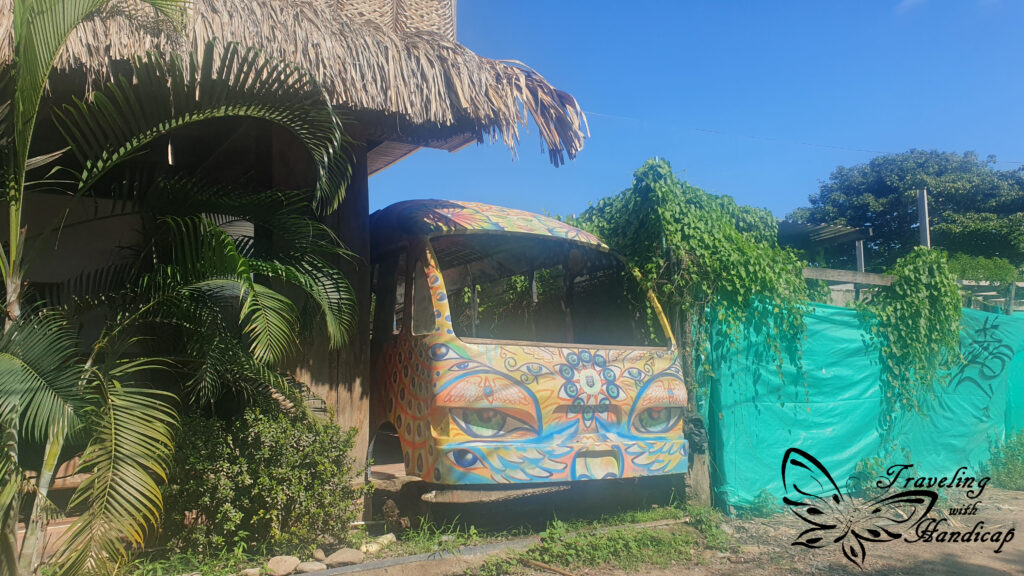



Further Destinations
I could have spent much more time along the Caribbean coast of Colombia. However, I was happy after leaving, to get a break of the hot and humid weather. Thus, after getting back to Bogotá, I was able to sleep properly again, even without any air-condition. Nevertheless, I’d like to write down some recommendations I got from both other travelers or locals.
- Minca: A small village within a tropical rainforest, with many animals around. I skipped it since I expected it to be reasonably similar to Mindo in northern Ecuador.
- Ciudad Perdida: An archeological museum representing interesting content to the natives of northern Colombia.
- Sierra Nevada de Santa Marta: A prominent mountain range with snow-capped Pico Cristóbal Colón in the backcountry and visible from Palomino.
- Bosque Andino
- Continuing up north towards the northernmost point of Ecuador: Riohacha, Mayapo beaches, Taroa


